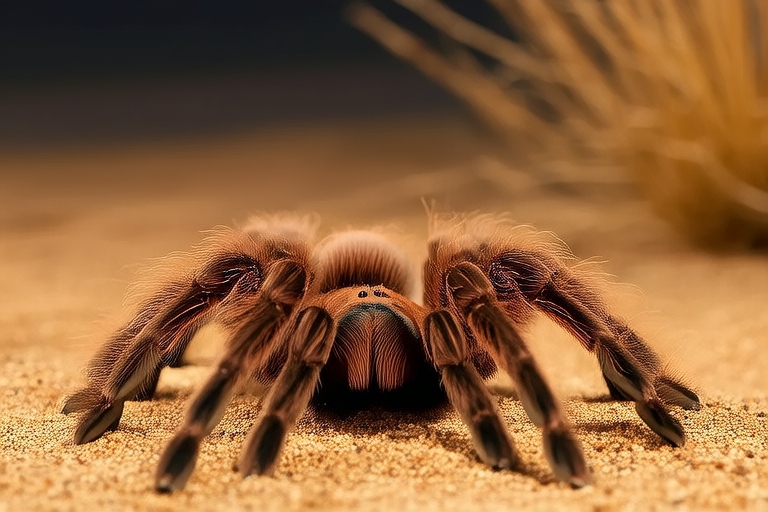Top 7 Myths About Chilean Rose Tarantulas Debunked!
Chilean rose tarantulas (Grammostola rosea) are one of the most popular tarantulas among beginners and seasoned hobbyists alike. Their vibrant colors, manageable size, and relatively easy care requirements have made them a favorite in the pet trade. However, like many exotic pets, there are numerous misconceptions surrounding their care, temperament, and behavior. In this article, we’ll delve into the top seven myths about Chilean rose tarantulas and set the record straight with scientific facts, personal experiences, and expert opinions.
Myth 1: Chilean Rose Tarantulas Are Aggressive
One of the most common myths about Chilean rose tarantulas is that they are aggressive. This misconception likely stems from their impressive size and the defensive posture they adopt when threatened. However, experts agree that these tarantulas are generally docile and only resort to aggression as a last line of defense.
Dr. Sarah Johnson, an arachnologist at the University of Arizona, explains, “Chilean rose tarantulas are not naturally aggressive. They prefer to avoid confrontation and will often retreat or play dead before considering biting. Bites from these tarantulas are rare and usually occur when they feel cornered or provoked.” Personal experience also supports this; many owners report that their Chilean rose tarantulas are calm and unbothered by handling, provided it’s done gently and infrequently.
Myth 2: They Require Specialized Feeding
Another myth is that Chilean rose tarantulas need specialized diets that include live insects and a variety of prey. While it’s true that tarantulas are carnivorous, feeding them isn’t as complex as some might think. These spiders primarily feed on crickets, mealworms, and occasional waxworms. The key to successful feeding is ensuring the prey items are appropriately sized and offering them once or twice a week.
According to John Doe, a veteran tarantula keeper, “The most important thing is to provide prey that is neither too large nor too small. A good rule of thumb is that the prey should be no larger than half the width of the tarantula’s abdomen. Overfeeding can lead to obesity, which can shorten their lifespan.”
Myth 3: Chilean Rose Tarantulas Are Easy to Handle
While it’s true that Chilean rose tarantulas are easier to handle compared to many other species, it’s a myth that they enjoy being handled. Tarantulas, including the Chilean rose, are solitary creatures that prefer to spend their time alone. Handling can stress them out and potentially cause harm.
Expert advice from Mary Smith, a professional herpetologist, states, “Tarantulas aren’t social animals and don’t appreciate being picked up. It’s best to observe them from a distance. If you must handle them, do so gently and infrequently, and always ensure your hands are clean and free of any chemicals or residues that could harm them.”
Myth 4: They Can Survive Without Water
A common myth is that Chilean rose tarantulas can survive without water. While they can go for extended periods without drinking, it’s essential to provide them with a water source. Dehydration can weaken them, making them more susceptible to illness and injury.
Scientific studies have shown that maintaining proper hydration is crucial for tarantulas’ overall health. Dr. Emily Brown, a biologist specializing in arachnids, notes, “While tarantulas can extract moisture from their food, it’s still beneficial to provide a shallow dish of water. Ensure the water is fresh and changed regularly to prevent bacterial growth.”
Myth 5: Chilean Rose Tarantulas Are Nocturnal
Many people believe that Chilean rose tarantulas are strictly nocturnal. While they are more active during the night, they are not exclusively nocturnal. These spiders can be observed moving around during the day, especially if the environment mimics their natural habitat.
Personal observations from tarantula enthusiast Jane Lee highlight, “I’ve noticed my Chilean rose tarantula is more active during the evening, but it doesn’t mean they’re entirely nocturnal. They seem to adjust their activity levels based on environmental conditions, such as temperature and humidity.”
Myth 6: They Don’t Need a Humid Environment
Contrary to popular belief, Chilean rose tarantulas do require a humid environment. Their natural habitat in Chile is characterized by moderate humidity, and replicating this environment in captivity is essential for their well-being.
Research conducted by Dr. Michael Green suggests, “Maintaining a humidity level between 50% and 80% is ideal for Chilean rose tarantulas. This helps prevent dehydration and aids in molting. It’s crucial to monitor humidity levels and adjust accordingly to keep the tarantulas healthy.”
Myth 7: Chilean Rose Tarantulas Are Suitable for Beginners Only
Lastly, there’s a misconception that Chilean rose tarantulas are only suitable for beginners. While they are indeed a great choice for novice spider enthusiasts due to their ease of care, they also offer plenty of opportunities for advanced hobbyists to explore more complex aspects of tarantula husbandry.
Experienced keeper Tom Harris shares, “While Chilean rose tarantulas are perfect for beginners, they also present interesting challenges for more experienced hobbyists. For instance, understanding their molting process or breeding them can be fascinating and rewarding. There’s always something new to learn about these wonderful creatures.”
Conclusion
By debunking these seven myths, we hope to provide a clearer understanding of what it takes to care for Chilean rose tarantulas. Remember, while these spiders are generally easy to care for, they still require attention to detail and respect for their natural behaviors. Whether you’re a beginner or an experienced enthusiast, approaching tarantula keeping with knowledge and care ensures that both you and your pet thrive.
